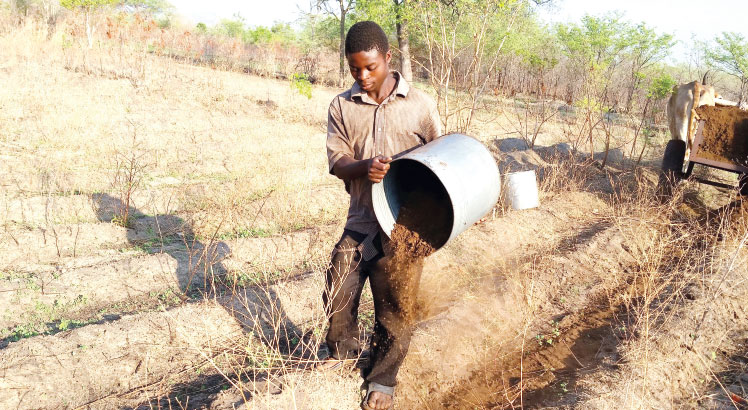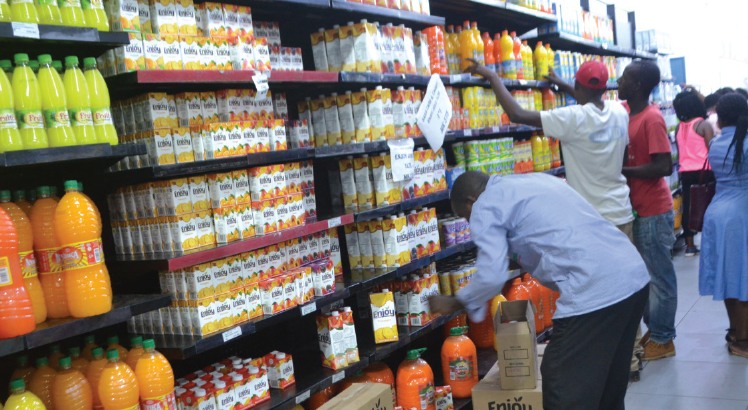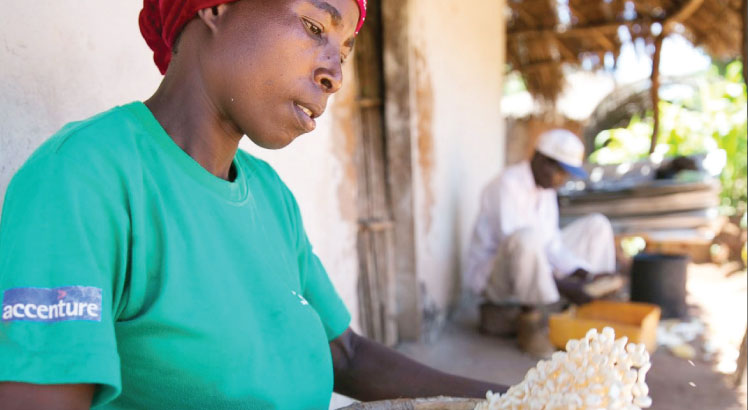Tracing economic growth drivers
In 2012, a slump in agriculture resulting from a weather-related decline in maize production and a halving of the tobacco crop during the year was enough to force authorities to revise downwards real gross domestic product (GDP) growth rate then.
And that proved beyond doubt that one can ably draw analogies or liken the agriculture sector to a lion in the thick jungle.

It is a tale of a sector whose dominance seems to be insurmountable.
Then the agriculture sector was poised to grow by 4.3 percent, but as days rolled into months, bad weather struck-pummelling hard maize and tobacco crop-and the results were disastrous as the shock spilled over to the rest of the economy.
Real GDP growth rate drastically shrunk from the initial forecast of 4.3 percent to a meagre 1.8 percent in 2012.
History repeats itself
Three years later, Malawi has found herself in another horrendous encounter. The ravaging floods that hit the country in January, just like bad weather in 2012, have left a dent on the economy.
The magnitude of the problem is worth digging deeper.
An estimated 89 000 hectares of cropland was destroyed by the floods, representing around 2.4 percent of total agricultural land in Malawi.
Of course, production of key cash crops, namely tobacco, tea and sugar, has not been heavily affected by the floods, but still the pinch is yet to be felt overall.
But the truth is that the floods in 15 of Malawi’s 28 districts, affected 12 sectors whose recovery and reconstruction needs are estimated at $494 million, according to a draft report of the Post Disaster Needs Assessment done by the government and its development partners.
Excluding private housing which constitutes about 35 percent of the overall recovery needs, transport poses the single largest recovery needs at 21 percent followed by agriculture at 16 percent and water and sanitation at12 percent, according to the World Bank.
And on aggregate, it is however, estimated by the World Bank that floods will cost the economy by 0.56 percent in 2015 or roughly around K12 billion going by the K2.2 trillion national wealth value.
Even the latest commentary by the Reserve Bank of Malawi (RBM) is clear on how the external shock in the name of floods will this year eat into Malawi’s economic growth trajectory.
Real GDP growth is now estimated at 5.4 percent in 2015 from the previous projection of 5.8 percent, according to RBM.
“The downward revision has been necessitated by a contraction in agriculture due to late on-set of rains, floods and early cessation of the rains. The final impact of the drought on GDP is yet to be ascertained,” said Charles Chuka, RBM governor, in the latest Monetary Policy Committee (MPC) minutes.
Agriculture, manufacturing, wholesale and retail trade sectors in the driving seat
Tellingly, for the past three years, statistics on the ground point to a situation where agriculture, manufacturing, wholesale and retail trade and of course information and communication have primarily driven Malawi’s economic growth.
This means that any exogenous or endogenous shock to these sectors has a bearing on the overall performance of the country’s economy, as measured by GDP, going by precedence as well.
In 2014, the rate of growth of GDP stood at 5.7 percent, a modest increase compared to the rate of 5.2 percent recorded in the previous year, according to World Bank estimates.
And the relatively high rate of economic growth recorded in 2014 was primarily driven by the growth of the agricultural; information and communication; and wholesale and retail trade sectors.
Going backwards by a year, in 2013 Malawi is estimated to have grown by 6.1 percent and that growth, according to former president Joyce Banda, was buoyed by an increase in production levels of some key cash crops (agriculture) and improved capacity utilisation in the manufacturing sector.
Such a six percent growth rate was in fact threefold the rate of 1.8 percent attained in 2012 when Malawi’s tobacco and maize production were trimmed to size.
Even the trend shows that for the past three years (in fact since 2011 according to the government annual economic report of 2014), agriculture sector has emerged the top most sector that is anchoring the economy.
This is the snapshot. In 2012, 2013 and 2014 agriculture, forestry and fishing share of GDP was estimated at 29.9 percent in all years.
In fact, projections are that the sector will also emerge as a highest contributor to GDP in 2015, according to government statistics.
And it has been the wholesale and retail trade sector which has all along trailed the ‘giant’ agriculture sector throughout the years.
The sector contributed 15.5 percent in 2012 and 2013 before contributing to 15.3 percent in 2014 and expectations are that the sector will contribute by 15.2 percent this year.
The manufacturing sector appears to be one other sector that is supporting Malawi growth pillars on the back of agriculture and wholesale and retail trade sector.
The sector’s contribution to the economy has been like this: 9.6 percent in 2012, 9.5 percent (2013), 9.4 percent (2014) and a projection of 9.3 percent (2015).
On Monday, a Lilongwe-based economist (who did not want to be named) said unless Malawi pulls her socks on diversification drive, agriculture sector will still dominate its contribution to the economy ever.
Potential in mining, construction, real estate sectors
Although only a few sectors have underpinned Malawi’s economic growth rate for the past few years, there is huge potential from other sectors that would need adequate government policy direction and support.
Available statistics speak volumes that mining and quarrying, construction and real estate sectors have huge potential to shore up economic growth for Malawi.
For instance, the real sector contribution to GDP in recent years has been impressive.
The sector’s share of GDP in recent years has been 8.3 percent in 2012, 8.0 percent (2013), 7.7 percent (2014) 7.5 percent as a projection in 2015.
Similarly, growth rate registered in the mining sector is also something authorities can smile about, although recent trends on the international market have hurt the domestic mining sector such as the plunge in the uranium price.
The sector’s growth was estimated at 7.6 percent in 2013 from 14.9 percent in 2012.
In 2014, the mining and quarrying sector contracted by 7.8 percent and the contraction was attributed to the suspension of production at Kayelekera Uranium Mine on February 7, 2014 as the company continued to make losses due to low prices on the international market.
But this year, figures show that the sector is expected to grow by 2.2 percent, owing to moderate growth in traditional mineral outputs including rock quarry aggregate, agricultural lime, coal and gemstones.
Last week’s encouraging words from President Mutharika on mining seem comforting.
“Government will continue to prioritise the sector with a view to increase its contribution to the country’s GDP from the current six percent to about 20 percent by 2020,” said Mutharika, apparently mindful of huge potential that Malawi economy can accrue from mining sector.
Government, according to Mutharika, will reach such a target by, among others, reviewing the legal and policy instruments, including the Mines and Minerals Act (of 1981) in a manner that safeguards the interests of the country.





